As Saigon fell, Iowa sailors rose to the task
Posted
on Monday, May 12, 2025
U.S. Navy Vietnam era veterans Betty and Mike Butler of Cedar Falls are shown here in the permanent Vietnam exhibit area of the Sullivan Brothers Iowa Veterans Museum in Waterloo. The Huey helicopter behind them was used in Vietnam and similar to ones used in the evacuation of Saigon. Behind the Huey is a display of dogtags for each of the Iowans killed in Vietnam. (Pat Kinney photo)
CEDAR FALLS — Mike and Betty Butler were Iowa hometown sweethearts and newlyweds 50 years ago.
They were also in the United States Navy. Both of them.
And it was wartime.
It was during Vietnam.
It was April 1975. The Butlers, natives of Hartley in northwest Iowa, has wed 10 months earlier. The Paris peace accords had been signed in January 1973 and American prisoners of war had come home. Officially, U.S. military involvement had ended.
Mike and Betty Butler knew that was baloney. So did everyone in uniform. The war was about to have a chaotic end. But they, like thousands of others who had served during Vietnam, rose to the occasion.
It’s not something they talk about readily. Like so many who served with or before them during that war said, and still say today — simply, matter of factly —they did their jobs.
And to really understand what they endured beyond that, well, you had to have been there.
Betty was an officer and a nurse in a neurosurgical unit at Oak Knoll Naval Hospital in Oakland, Calif. in the San Francisco Bay area. Trained at South Dakota State University on a Navy nursing scholarship, she was treating those who still were suffering from the physical and psychological wounds of their service in Vietnam.
Mike, who’d enlisted in 1971 after a year at the University of Northern Iowa, was processing data in mission planning on the aircraft carrier USS Enterprise (CVN-65), home ported at Alameda near Oakland. He’d had a tour in the Gulf of Tonkin off Vietnam before he and Betty were married.
On that tour, Mike met and befriended the highest ranking and longest suffering returning American POW of the war — naval aviator Rear Adm. James Stockdale, who’d served 7 1/2 years of brutal torture in the infamous “Hanoi Hilton” after his plane was shot down in 1965.
“I saw him ‘bouncing off the bulkheads’ because he didn’t have his sea legs anymore,” Mike said of Stockdale. “I offered to help him because I was afraid he’d fall down. And he said, ‘No son. I have to get my sea legs back. I have to go back honorably.’"
In reality, Stockdale was barely able to walk from years of torture and an untreated leg injury from when he was shot down. He would later receive the Medal of Honor for organizing fellow POWs’ resistance to their captors.
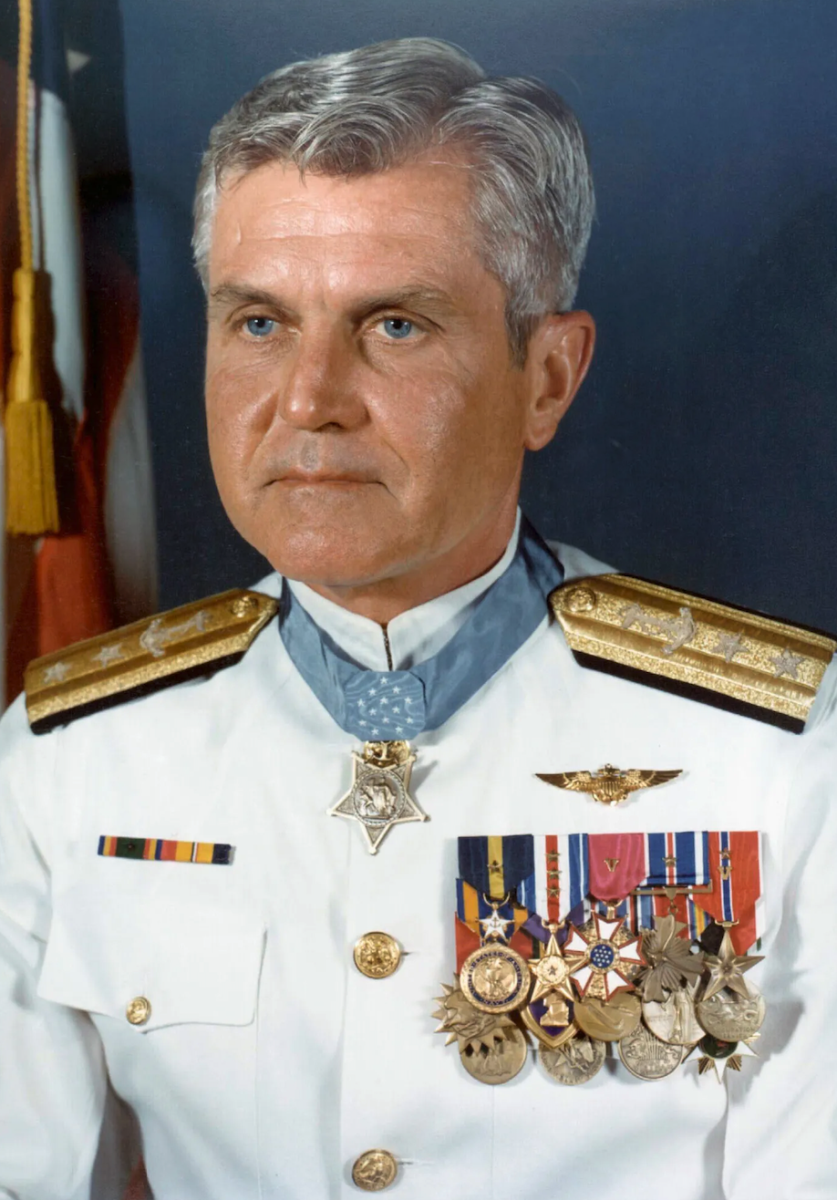
U.S. Navy Vice Admiral.James Stockdale in 1979 (U.S. Navy photo)
In April 1975 the Enterprise was at sea again, in the Indian Ocean. Word was the ship was about to embark on a world tour. The Butlers, separated for seven months since Mike left port, were looking forward to seeing each other at an Enterprise port visit in Singapore. Betty had scheduled leave time to meet Mike in port with a group of other spouses.
It didn’t happen.
“A week before we were supposed to go, I got a call saying ‘It’s canceled,’ “ Betty said “ ‘Enterprise is not going to Singapore. They are turning around and going back toward Vietnam.’ Mike says he thinks I knew that before he did.
“I worried about him the whole time he was gone,” Betty said.
The North Vietnamese Army had launched a major offensive into South Vietnam. The entire country, including the capital of Saigon, was about to fall to the North. Washington politicians engaged in partisan bickering and blame shifting. But one fact remained.
There were still Americans in Saigon, as well as many South Vietnamese allies who feared for their lives. And someone had to get them out of there.
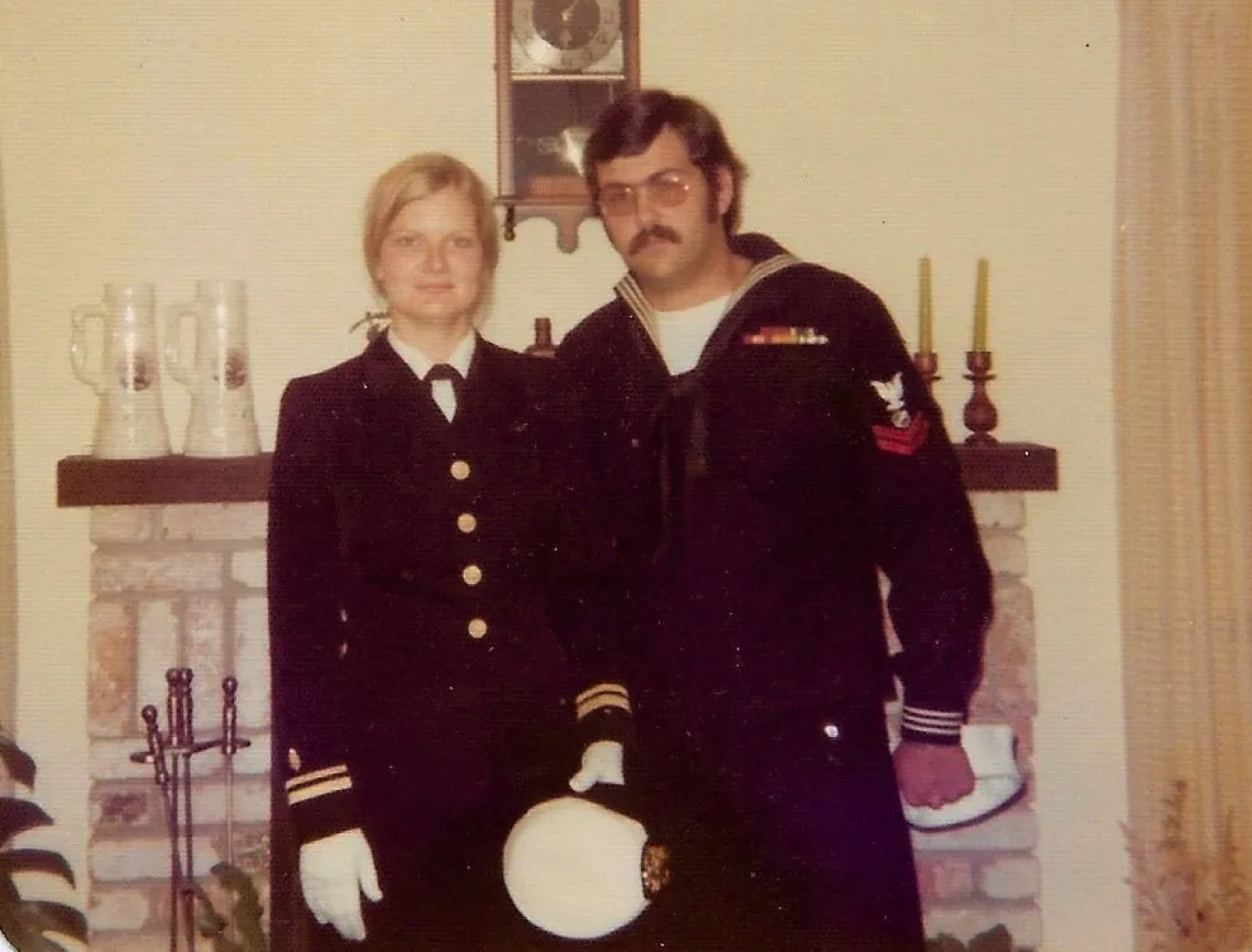
Betty and Mike Butler of Cedar Falls during their Navy service in the 1970s (Courtesy photo)?
That job fell to Mike and his shipmates on the Enterprise and several other ships and sister carriers. One was the USS Midway, where Bob Fencl of Waterloo was a shipmate. He was just a few months into his Navy service. In just a few days he would be feeding starving South Vietnamese refugees as part of the ship’s mess crew.
It was called “Operation Frequent Wind,” and it happened on April 29-30, 1975. More than 7,000 people were evacuated. It was a heartbreaking end to a conflict that had cost an estimated 1.5 million lives during the period of heaviest U.S. involvement, including more than 58,000 Americans and, within that, 869 Iowans out of 115,000 from the state who served.
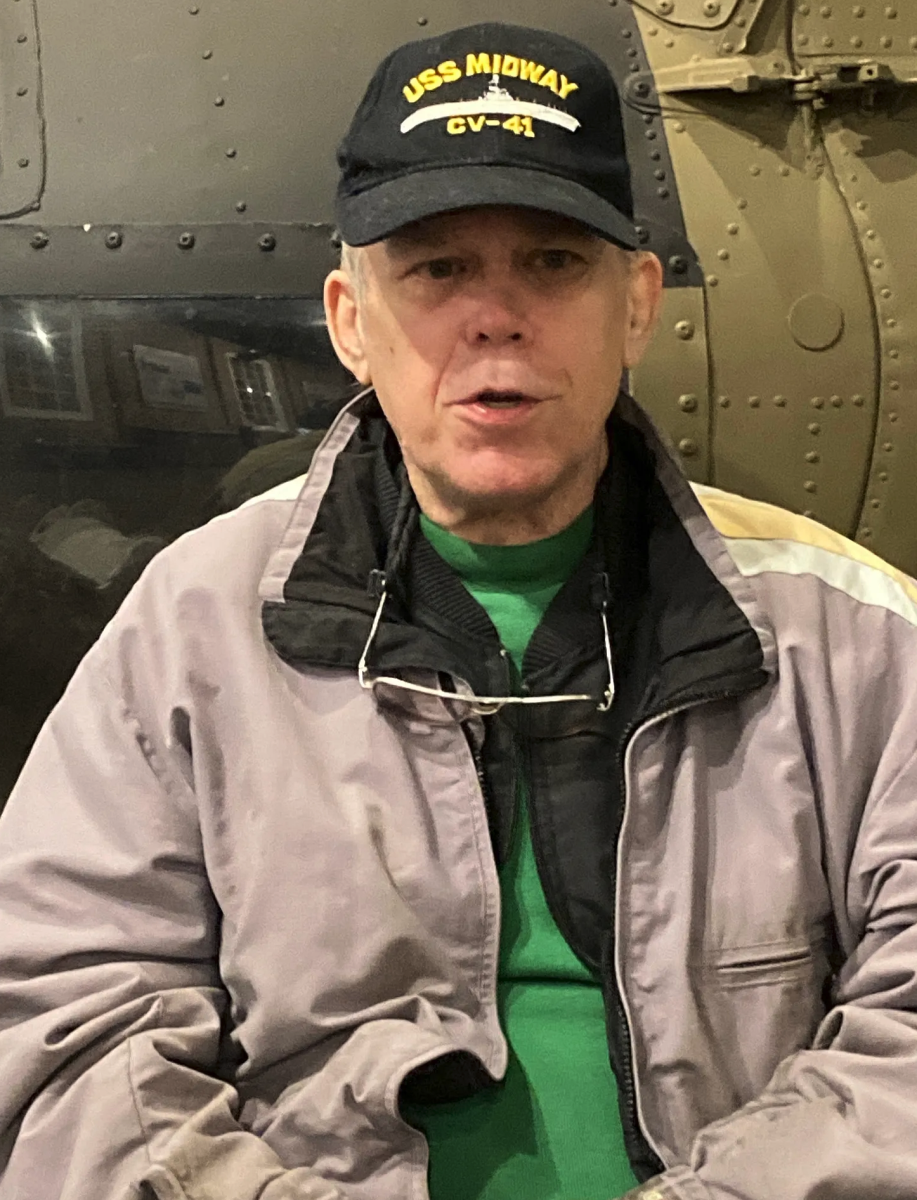
Bob Fencl of Waterloo served in the U.S. Navy from 1974-78 and fed Vietnamese refugees on the carrier USS Midway during the fall of Saigon 50 years ago this month (Pat Kinney photo)
Fencl’s ship, the Midway, set up about 100 miles offshore to receive refugees. “We were picking up all these helicopters,” he said. Their ship’s fighter planes had been flown off to bases on land such as Guam to makes space for the helicopters.
“We rapidly filled them (hangar and deck spaces) all up” and the evacuation was fast and furious. The Midway received additional South Vietnamese helicopters full of evacuees coming from the mainland, beyond space available at any one time. The commanding officer was forced to order the crew to dump unloaded helicopters in the worst condition over the side of the deck into the ocean to make room for others rapidly coming in.
“We ended up throwing over five Hueys and two Chinook helicopters,” Fencl said. The same happened on other carriers.
Amid that confusion, a South Vietnamese air force major had commandeered a Cessna “Bird Dog” scout plane from the mainland and was trying to land on the flight deck with his wife and five children. Lacking radio, the pilot dropped a note tied to a rock to the deck to inform the crew on board he was running out of fuel and trying to land.
“Please rescue me,” the note said.
“The guy was a top-notch pilot,” Fencl said, and he landed on a slippery, short cross-deck in the rain. All the instrumentation in the cockpit was stripped out to make room for his wife and family. He was sitting on a crate flying the plane.
 Sailors push a helicopter over the side of the USS Midway, at left. to make room for a Cessna scout plane at right to land carrying a South Vietnamese pilot and his family during the evacuation of Saigon Apri 29, 1975 (U.S. Navy/midway sailor.com)
Sailors push a helicopter over the side of the USS Midway, at left. to make room for a Cessna scout plane at right to land carrying a South Vietnamese pilot and his family during the evacuation of Saigon Apri 29, 1975 (U.S. Navy/midway sailor.com)
“Most of the people coming out of the helicopters, they had just the clothes on their back,” Fencl said. “They were in poor condition. They really looked thin. I’m sure they welcomed the meals they were getting from us.” He said the ship’s mess crew was recognized by the Navy for its service during that time.
In another incident the Midway rescued about 50 refugees from an overcrowded fishing boat. The carrier was under orders to take refugees only from boats in danger of sinking. Fencl said the Marines working security on the Midway removed the refugees to the carrier and then shot holes in the fishing boat to make it sink so they could justify taking the refugees on board the carrier.
Fencl went on to work for defense munitions contractor Chamberlain Manufacturing and John Deere in Waterloo after his Navy service.
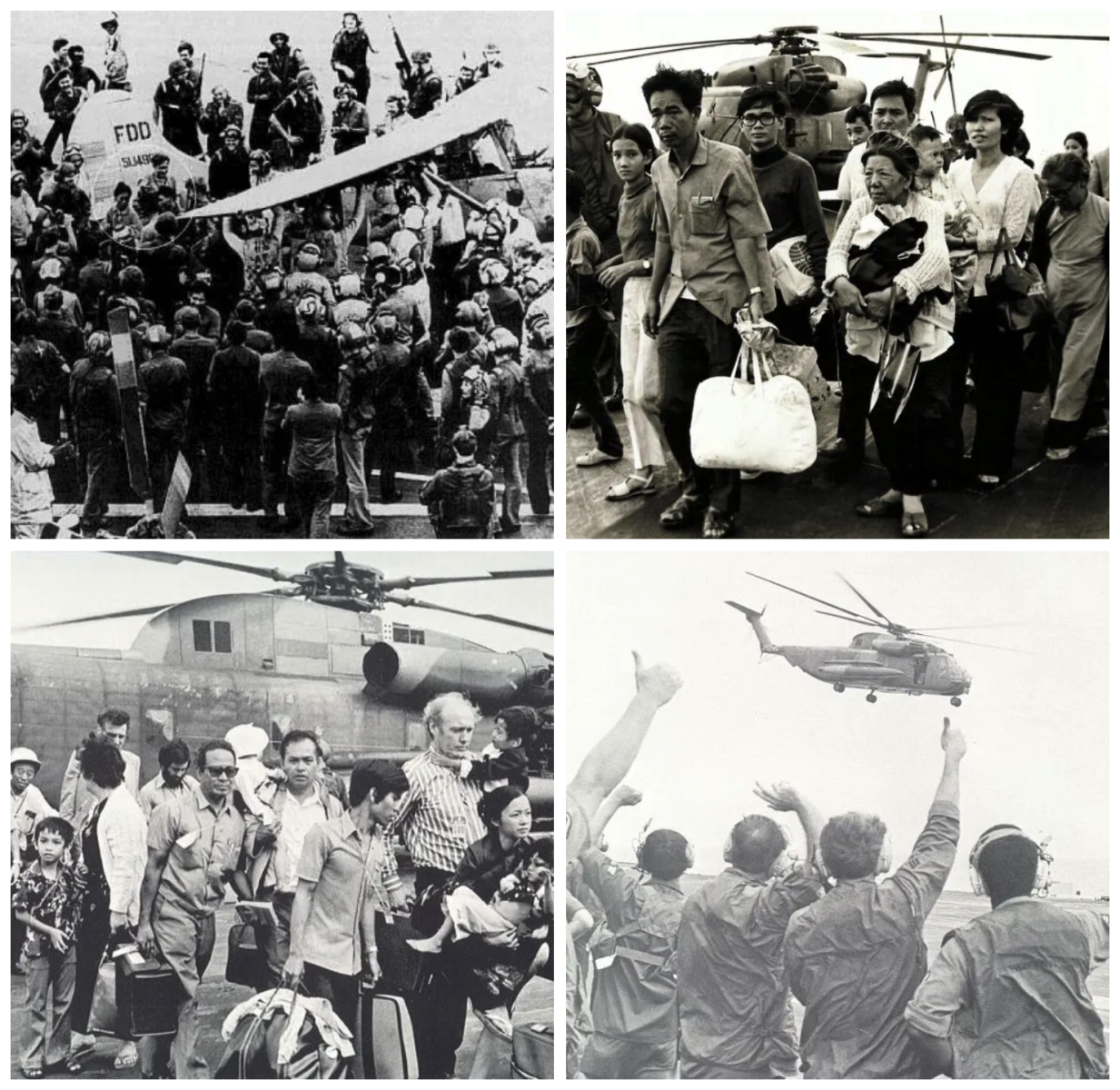 Various images of U.S. Marine Sea Stallion and South Vietnamese Huey helicopters taking off and landing from the USS Midway with refugees during the evacuation of Saigon April 29-30, 1975. At upper left, a South Vietnamese major and his wife and five children are engulfed and congratulated by the crew of the USS Midway after safely landing a commandeered Cessna scout aircraft (U.S. Navy/midwaysailor.com)
Various images of U.S. Marine Sea Stallion and South Vietnamese Huey helicopters taking off and landing from the USS Midway with refugees during the evacuation of Saigon April 29-30, 1975. At upper left, a South Vietnamese major and his wife and five children are engulfed and congratulated by the crew of the USS Midway after safely landing a commandeered Cessna scout aircraft (U.S. Navy/midwaysailor.com)
While Fencl’s ship received refugees, Butler said the Enterprise, which had re-armed and taken on a Marine detachment at Subic Bay Naval Base in the Philippines, dispatched fighter aircraft to provide air cover to escort the evacuation. Butler said there was to have been a flight zone through which the American aircraft would be granted safe passage.
Instead, Butler said, it turned out to be a shooting gallery. The air was filled with volleys of surface-to-air missiles.
“We had plenty of anti-aircraft missiles and bullets coming,” Butler said. Over the course of the entire operation, “I saw more damage to our planes in that two-week period than I had the whole nine months from our (Vietnam) cruise before.”
Unlike a normal combat operation, Butler said the opposing forces knew exactly where the Americans would be flying. “They were much more accurate with a narrow corridor than they had been when they didn’t know we were coming.
“But we were there to the end,” Mike said. “They were bringing planes down into the hangar bay because there was too much activity on the flight deck. And seeing the shots and holes in them,” he said, still showing a slight hint of irritation, “well, it’s like, ‘We should go back and rearrange how this ended.’"
Betty Butler, her planned reunion with Mike canceled, also felt the ripple effect of Operation Frequent Wind at the hospital in Oakland.
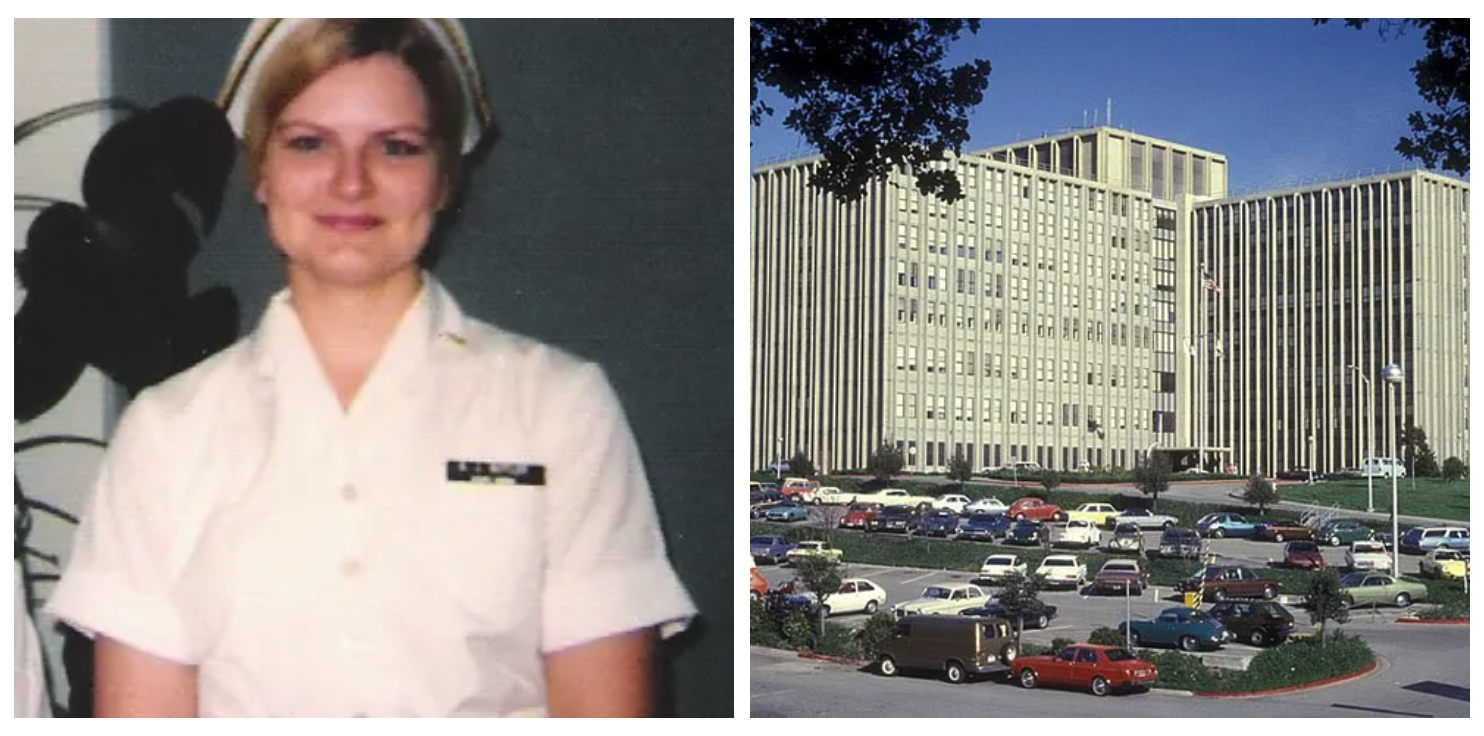 At left, Betty Butler in December 1974 when she attained the rank of lieutenant junior grade at the Oak Knoll Naval Hospital in Oakland, Calif., shown at right in the 1970s. It has since been demoished for redevelopment (Courtesy photo/California State Military Museums program)
At left, Betty Butler in December 1974 when she attained the rank of lieutenant junior grade at the Oak Knoll Naval Hospital in Oakland, Calif., shown at right in the 1970s. It has since been demoished for redevelopment (Courtesy photo/California State Military Museums program)
“At the hospital it was all aflutter,” she said, '‘because the news was people were being sent from our hospital to go to San Diego (Naval Medical) hospital.” on 24 hours’ notice with no set date of return. “That was when the refugees were being brought in from Vietnam, the Vietnamese people. So they needed a lot of extra staff.” That left her and her comrades desperately short of staff to handle the same heavy workload of patient needs.
”Navy and Marines came to our hospital, plus dependents. The Bay Area had a huge number of dependents,” Betty said. “The ones who were really injured from Vietnam were Marines in country. We would get head injury patients, spinal cord injuries, that type of thing,” many of whom had a long convalescence ahead of them.
“The whole time I was there, the hospital was very, very busy, and full,” she said. “And this was a big Navy hospital. There was a large Army hospital, and they were very busy too.” It included cases of post-traumatic stress disorder. “They didn’t call it that then, but yeah, definitely,” she said.
“It was a nine-story hospital and had four wings on each floor. The one I was on, it was 32 beds, and I also helped cover another floor, another ward, which was 36 beds. When we worked nights I was the only registered nurse to cover both of the units. So we depended on corpsmen to do what they needed to do to report back to me on what was going on. On a night shift practically everybody was 24 or younger.”
Mike and Betty were reunited Memorial Day weekend. “It was great. It was a relief,” she said. Mike was discharged soon after and began to go back to school on the G.I. Bill, while Betty had another year to serve. For her, and the patients in the hospital, the war was not over.
“There are a lot of them I still think of,” she said. “One was a Marine sergeant who had a head injury. He had a lot of issues. He would go around to the lower-level Marines on our floor, bossing them around, telling then to do this and do that, while we were trying to make him do what he was supposed to be doing. He was quite the character. There were other ones too.” Another serviceman had been training underwater and sustained neurological damage from lack of oxygen from being submerged too long. His wife had flown in to be with him. “It was just very sad, very sad,” Betty said. There were also genuine anxiety attacks by personnel about to be deployed or go to sea, but there were also malingerers faking those symptoms, and staff had to discern between the two.
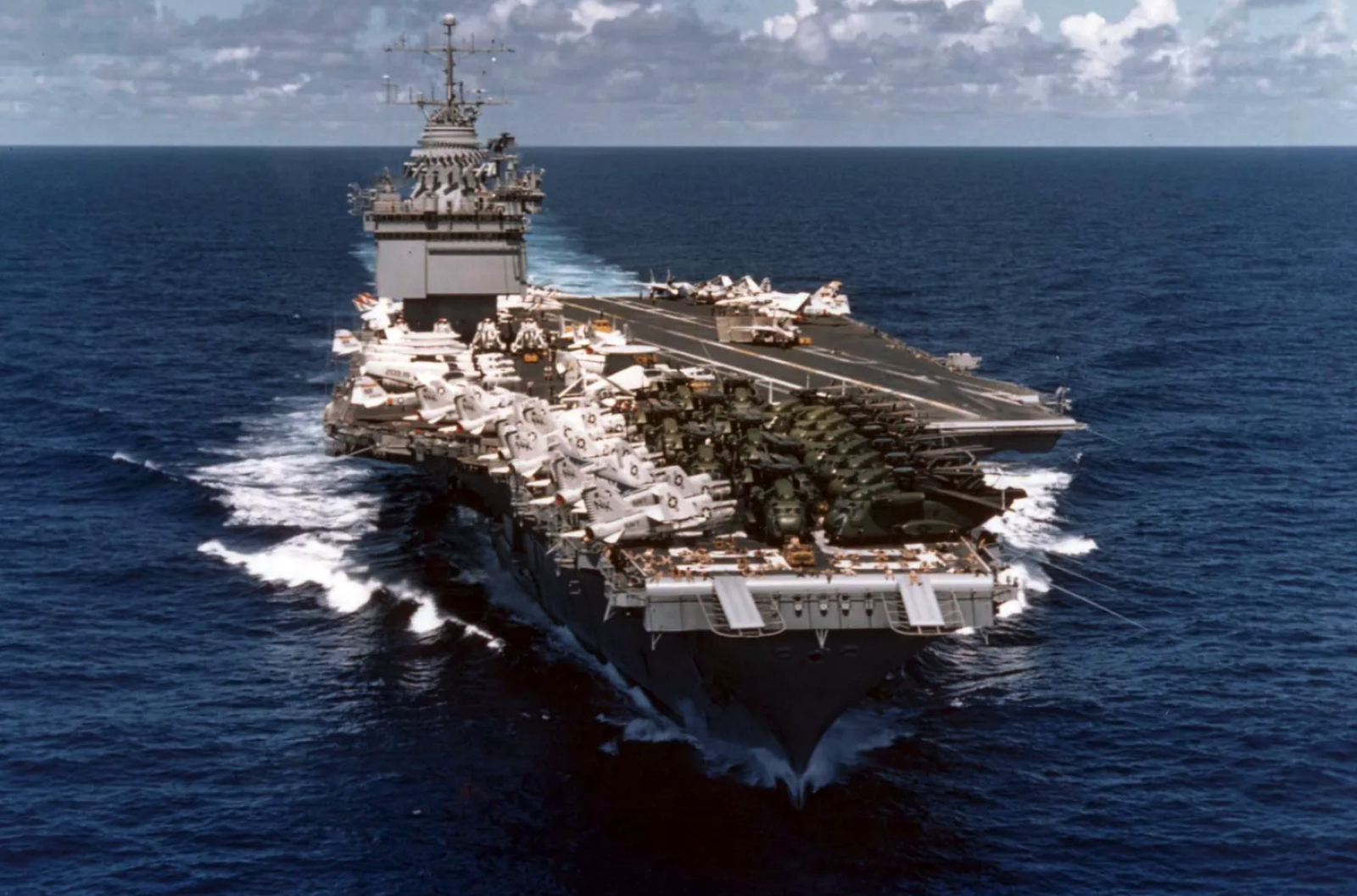
The USS Enterprise, hull number CVN-65, with Mike Butler aboard, is shown here in May 1975 returning from Operation Frequent Wind, loaded down with a complement of U.S Marine Corps Sea Stallion helicopters used in the evacuation of Saigon, in addition to its own aircraft. Some sailors are sunbathing on the deck in the foreground (U.S. Navy photo).
While there was a large military presence in the San Francisco Bay area, it was the center of a lot of the anti-Vietnam War protest movement too, as well as various dissident groups or individuals who were disgruntled with the military for whatever reason. Not all were peaceful.
“I can remember a time when there was somebody in the Oakland Hills area shooting down at our parking lot at our hospital,” Betty said. “We had to put our little white nursing caps in our car to walk inside. There was some concern this sniper, or whoever he was, was aiming at the little white caps. So they let us not wear our caps when we walked in the hospital. Nobody really got hurt, but there were gunshots, so we were wary.”
Mike noted that when he left service, he had trouble finding work in the Bay area, in meat cutting or grocery positions. “They had posted they needed help, but as soon as they found out you were a Vietnam vet, then, ‘No, you’re not gonna be reliable.’ “ Mike said. “Nobody trusted Vietnam vets — that we were potheads or whatever. It was not a friendly case going in and looking for jobs.”
Eventually, he got a job as a teller at Bank of America. “Being from Iowa, I did really well on the math test,” he said, and the person in charge of hiring happend to be an Iowan.
Mike parlayed that opportunity into a career in the local banking industry when he and Betty decided to returned to Iowa in 1977 to raise their family. Mike first landed a job with what was then Midway Bank & Trust in Cedar Falls and continued locally in the industry with a succession of financial institutions through acquisitions and mergers. Betty was an instructor in the nursing department at Hawkeye Community College in Waterloo. They have three adult children and six grandchildren.
Both the Butlers appreciate their experience in the service. It gave them structure and purpose and they saw and experienced a lot before heading back home to Iowa.
Mike Butler said that, while those who served during Vietnam in any capacity would have preferred a different outcome, “those of us who survived are happy we could.”